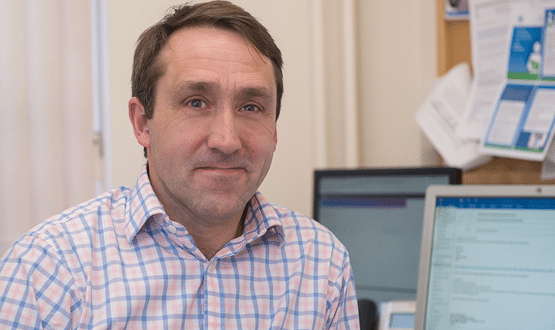Could data be the route to the efficiencies the NHS needs?
- 5 April 2018

For James Rawlinson, the NHS needs a thoroughly local approach to managing pressures, driven by a deep understanding of data. And the health informatics director at Rotherham Foundation NHS Trust reports that data analytics is already making a difference at his organisation.
To suggest taking a nimble, local and responsive approach to managing our health and social care system might be considered at best impossible and at least heretical by many familiar with the traditional command and control culture that persists in our health service.
However, I firmly believe we can and must take a tech-inspired agile leadership approach to managing demand and activity through our systems. To be clear: I’m as enthusiastic as the next senior NHS manager to see greater investment in our health service. But in the short term we may be able to use agile methods more commonly seen in tech startups to pull us back from the brink.
Tech can deliver efficiency quickly
Real change that improves services for patients doesn’t have to take years or come with a huge price tag. Technology-driven efficiencies can be achieved now. We’ve been demonstrating this across Rotherham, despite the fact we’re faced with some of the worst healthy life expectancy figures and starkest health inequalities in England, as well as £75m of efficiency savings to make by 2020.
In common with the rest of the NHS, Rotherham’s health services are under extreme financial pressure. Growing demand driven by changing demographics and need mean we need to make our contribution to the efficiency savings by cutting levels of unscheduled care and shifting care into community settings where possible.
Up to date information
As the only hospital serving the town, Rotherham Hospital deals with around 100,000 A&E patients, 72,000 inpatients, 250,000 outpatient attendances each year and over 600,000 community contacts. The management or flow of emergency patients through a hospital is often described as a multitude of conveyor belts, and until recently, our departmental reporting was so behind the times our service managers might only get a view of what was happening in theatre or outpatients once a month.
As a consequence, service managers often had only a rudimentary grasp of capacity and demand, with waiting lists staying stubbornly high.
Now, we have a system that feeds data from the hospital’s own databases and national systems through real-time analytics into cloud-based reporting engines. This allows us and our commissioners to securely and instantly monitor – from any device – what’s going on across the organisation, from A&E to outpatients, theatres and community beds in easy to understand and interactive charts.
Waiting list reduction
In little more than six months, equipping frontline staff with this information and structuring clinical time more responsively around demand has delivered a number of benefits. Our community teams have improved access to their patients’ information, including when they are admitted to hospital.
We have live visibility of all nursing home patients in the hospital setting, to help our care home team support their care quicker. And we’ve cut outpatient waiting lists by 65% in some areas, as well as recorded a drop in the number of missed appointments (DNAs) per month. As a result of these benefits and others, we continue to be in the top 10% of trusts both in terms of hospital length of stay as well as seeing patients within the 18-week referral-to-treatment target.
The next step now is to start using the insights to predict where demand is coming from and how patients can be better supported in the community to prevent unplanned admissions.
Driving integration
We’re an integrated organisation, providing community services as well as hospital services, so we’re pulling all of our community hospital information into the system. This means that, for example, if we’re looking at the most frequent attendees at our A&E department, we now know immediately if they’re known to our community services – they might be having community treatment for podiatry, but we’d then know that they also needed help with incontinence, for instance. It’s about trying to pre-empt things so that we can reduce non-elective admissions and be as efficient as possible with our use of finite clinical resources.
This is by no means rocket science, nor is it a panacea. We’ve adapted a widely-used Microsoft business analytics tool developed by Cloud2 for NHS purposes and we’re already reaping results that we’re convinced are translating into better care for our patients. Simply sitting back and doing things the way we always have, waiting for an NHS ‘bail-out’ to solve all our problems won’t help anyone. Change can come, but it starts with getting a grip on what’s really going on in the here and now.





3 Comments
good stuff, hope the national leaders are listening because far more stuff (e.g. access to health data) needs to be “done” @ the national level
It is great to hear about your achievements at Rotherham. I think that the key is in the front-line staff and clinicians being able to act on what the data are saying – both in adjusting capacity in response to demand and in predicting future demand.
Good to see intelligent use of analytics. Be interesting to hear from other trusts and STP-ICSs on their approaches.
Comments are closed.